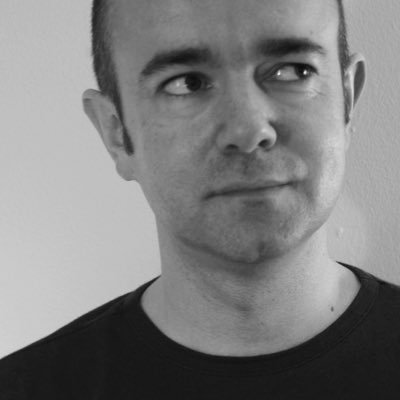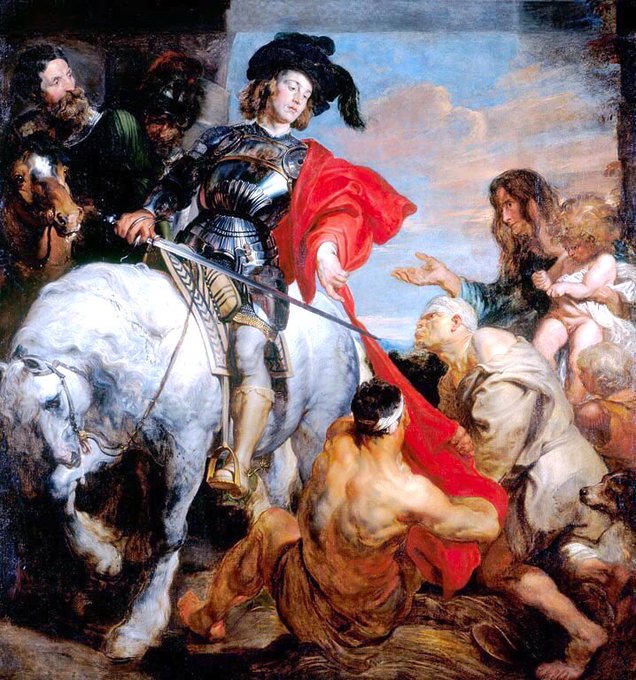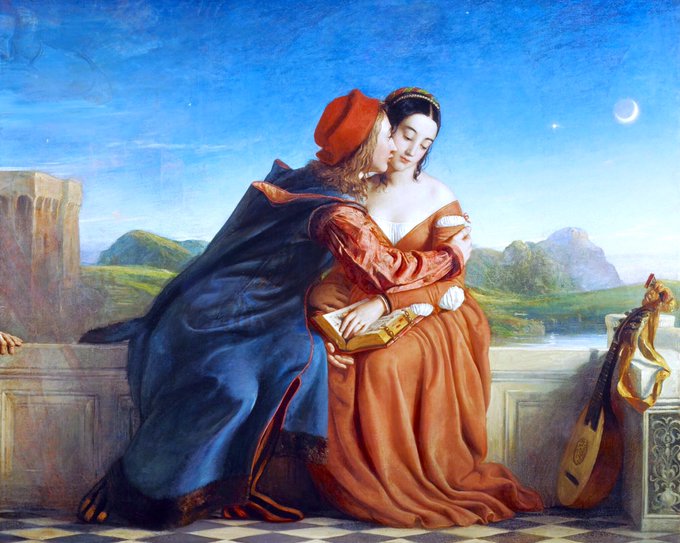Irish readers can see one of Van Dyck’s celebrated Genoese portraits, the Red Boy @NGIreland & a homoerotic male nude study, for one of his St Sebastians. Some of his finest works are at @NationalGallery
London including Charles I on Horseback (1637/8)
Amongst his drawings are portraits, nude studies & horses. The latter were used to raise up short rulers & symbolise their command over their kingdoms. Inigo Jones (1632-6), Equestrian Portrait (c1628-32), Study of the Dead Christ (c1635-40) & Kneeling Man (c1618)
The key component of a Van Dyck was effortless swagger. Such was his genius that the elaborate costumes & unlikely ringlets play second fiddle to the overall style of his work. Prince Tomaso (1634/5), James Stuart (1634-5), Henri II (1634) & Charles I & Henrietta Maria (1632)
At a time when it could lead to incarceration or execution gay artists had to hide their tracks. There are however clues to look for. One is a sensitivity to male beauty. Another is the painters’ circles. Man in Armour (c1625-7), Paris (1628) & Rinaldo & Armida (1629)
Even more than Rubens, he had an eye for an attractive woman & in contrast to his master he was also drawn to male beauty. Isabella Brandt (c1623-6), A Genoese Gentleman (1624), The Balbi Children (1625-7) & Self-Portrait (1627). Brandt was Rubens’ first wife.
Van Dyck went to Italy (1621-7) where he was based in Genoa. Self-Portrait (1621), Agostino Pallavicini (c1621), St Martin Dividing his Cloak (c1621) & Lady Shirley (1622). This period of his work was marked by a rich colour scheme of red & black in his portraits
Throughout his life he returned to painting himself regularly. This was both an examination of self & a calling-card for his talent. Daedalus & Icarus (1615-25), Soldier on a Horse (1616) & Self-portrait (1616/7). His Icarus is a surprisingly sensual work
Scottish art has always been diverse with many different styles including Celtic inspired works. William Dyce (1837) Francesco da Rimini, James Paterson (1887) Autumn in Glencairn, Joseph Crawhall (c1895) The White Drake & John Duncan (1913) Saint Bride
Dutch painting is represented by all the greatest exponents of the school. Jan Lievens (c1631) Portrait of a Young Man, Rembrandt (c1645) Woman in Bed & Self-Portrait aged 51 (1657). The Lievens is arguably his greatest work
There is a small but extremely choice collection of Spanish works. El Greco (1577-9) An Allegory, Velázquez (1618) An Old Woman Cooking Eggs & Murillo’s Personification of Summer (1640). The Old Woman is one of Velázquez’s earliest works.



































